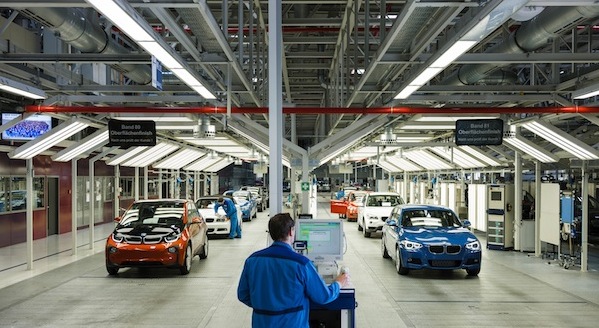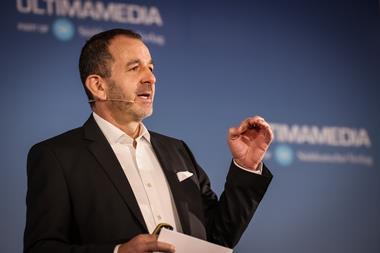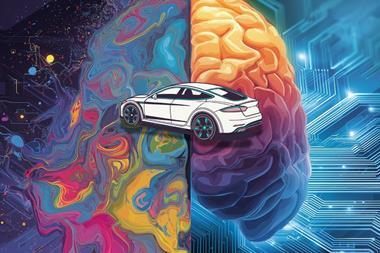At a cost of €400m, BMW has expanded in Leipzig so that its new, “born electric” models can be made in a simpler and more modern way than conventional vehicles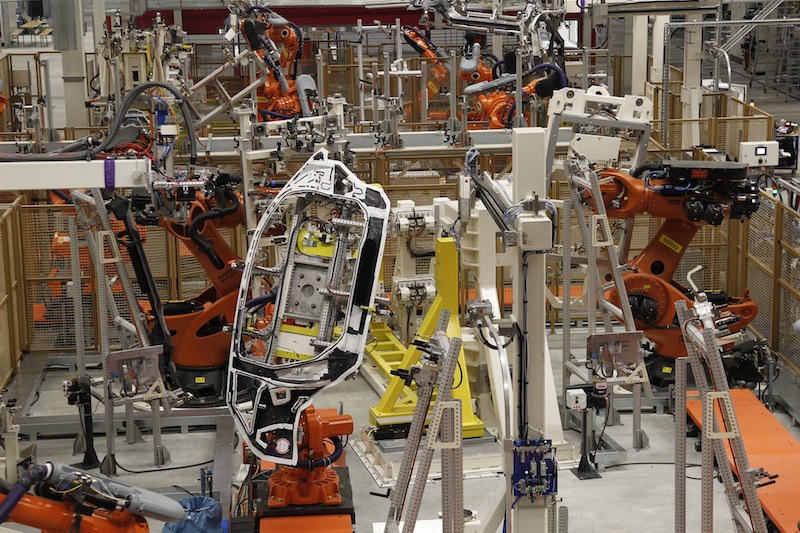
What does the future of mobility look like? BMW asked itself this question five or six years ago, and the answer which emerged from its multinational studies was that transport requirements will continue to grow as the global population shifts toward life in ‘megacities’.
The manifestation of this vision, and the product of BMW’s extensive research, is the all-electric i3. This vehicle entered into production last September with a similar drivetrain as the ActiveE model that was used for early testing, but with materials and manufacturing processes fully optimised for serial production.
Helmut Schramm, head of BMWi production, asserts that the i3 is not merely a vehicle or product but a “holistic approach” which enables BMW to manufacture in a simpler and more modern way than any other car-maker. It has required a €400m ($552m) investment at BMW’s plant in Leipzig, Germany, which originally opened with 3-Series production in 2005, but the i3 statistics speak for themselves: 100% use of renewable energy, plus reductions of 50% energy, 70% water and 50% noise compared with conventional vehicle manufacturing.
For i3 production, the electricity is provided by four wind turbines with a total output of 10mW – enough to cover a future ramp-up – the press shop is virtually unrecognisable, there is no welding, the number of components per vehicle has been drastically reduced, the paintshop is a minor part of the overall process and assembly is combined with logistics. No wonder Schramm believes we have moved on to the next generation.
Pressing on with progress
The 2.1m sq. m Leipzig plant makes the BMW 1-Series, 2-Series and the X1 in addition to the i3 and completes 740 vehicles per day, the majority of which are X1 Series. The i3, with its current daily output of 70 vehicles (day shifts only), will be joined by the hybrid i8 later this month. BMW wants production to be as flexible as possible, and Schramm says the i3 brings many synergies to the overall set-up. This is especially evident in the production of plastic parts, as the machines which make these for the i3 are also used for components on other models.
An i3 passes through four stages at Leipzig: CFK production, exterior components (thermoplastic skin manufacture), bodyshop and assembly.

The supply of stacks or laminates from Wackersdorf, which has a capacity of several thousand tonnes per year, is split into two additional streams: BMW Landshut for i8 parts production and the European supplier network which is being used to produce simpler BMWi components.
At Leipzig, the stacks are heated and preformed to give them a stable structure and to enable joining into larger components – a difficult and expensive process with steel or aluminium. Nine preforms are used to make an i3 sideframe, which is nonetheless light enough for a single worker to lift easily without equipment. By using CFRP, BMW has achieved a weight reduction of 50% and 30% in comparison with steel and aluminium respectively.
After joining, the preforms are subjected to high-pressure resin transfer moulding (HP-RTM) in which the carbon fibres and resin are bonded together (cross-linked) and hardened, generating the rigidity that is necessary for use in body parts. The liquid epoxy resin is injected into the preforms at high temperature as well as high pressure in an automated process requiring only the supervision of two workers.
The resin comes from chemical company Huntsman, which will also supply the i8. This resin can cure in five minutes at 100°C, enabling the part to be removed from the mould after just 10 minutes. There is no need for a conventional curing oven, and the speed of the process makes high-volume production of CFRP parts operationally and commercially viable. BMW says that over the past ten years it has managed to reduce overall CFRP production costs by 50%.
These components are finished by waterjet cutting to create precise contours and openings, before their bonding surfaces are sandblasted for further processing. By contrast, a steel sideframe would require sequential build-up from multiple inner and outer components. In keeping with sustainability practices, cut-offs are recycled and reused, for example in the i3 roofs and seats.
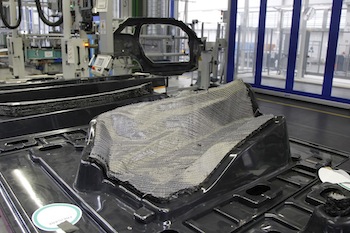
In a new development, the bonding via injection moulding method is now used for the i3’s rear door. The outer shell and substructure are injected in a single pass, then are joined as the two swivel plates turn, and bonded with a third plastic component. The process is fully automated, with two robots sitting outside the KraussMaffei unit to remove and handle the parts, as well as burning off the casting points and leaving the components to cool on a conveyor. The waste from this process is recycled and used for other applications within the plant. The thermoplastic skin is produced from 25% recycled or renewable materials; the only part which is not made from injection-moulded thermoplastic is the recycled CFRP roof.
A body of work for robots
The new 32,000 sq.m bodyshop at Leipzig, constructed specifically for BMWi, is characterised by its cool, calm production. Since bonding replaces welding, making the i3 body is literally a cold process; the environment in the hall is kept at a steady 24°C. The absence of sparks from welding also means that BMW can use protective cages of wood and flax, instead of steel, around the ABB robots assembling the bodies.
The i3’s CFRP Life module, or passenger cell, consists of far fewer components than comparable metal structures (130 versus 350-400) and these are joined in a fully automated process using standard robots, albeit ones with specially adapted control systems and fittings; each stage is activated by lights and monitored by cameras. While there are 160 robots, there are just 40 personnel in the i3 bodyshop, out of a total workforce of more than 6,000 at Leipzig (including external suppliers). There is no production line as such, but a star-shape arrangement with parts waiting for use by the teams of robots in each cage.
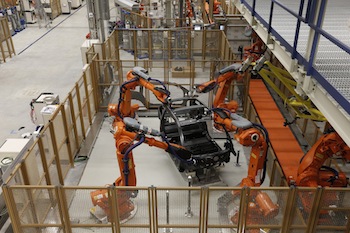
At four stations in the bodyshop, quartets of robots also check the measurements of the Life modules to ensure that each meets the required standard. A module is placed into the cage by another robot on a track outside it, then the four inside move around the frame using their laser heads to assess 364 measuring points. After checking a module, the robots dock their heads at calibration sticks rising from the floor of the cage so that all modules are measured using exactly the same criteria. The collected data is stored and accessible by production management at any time.
Bringing it all together
A special feature of i3 manufacturing, and one of the reasons BMW has been able to cut the production time per vehicle by 50%, is the parallel assembly of the Life module and the Drive module (the powertrain, chassis and battery) before the two are eventually united as the LifeDrive architecture. This means that the true appearance of an i3 emerges only in final assembly, rather than in the bodyshop. However, this set-up necessitates great precision, and BMW works to a ‘zero error’ principle for the i3.
A trade route which begins at Moses Lake in the US continues with a 'market square' and 'retail square' in the BMWi assembly hall at Leipzig
In the 49,000 sq.m assembly hall, which is illuminated partly by daylight, Leipzig has a ‘market square’ and ‘retail square’ concept, whereby materials follow a kind of trade route. Trucks arrive at the main gate to unload their deliveries – from BMW, JV and supplier plants within Europe – and these are brought to the market square by forklifts that keep to a just-in-time (JIT) schedule depicted on overhead screens.
Further on, the 2.5km conveyor which carries the Life modules in mid-assembly moves at intervals of five minutes – about four minutes longer than usual, but necessary for the work that must be completed in this phase of i3 production. This has been set as the standard rather than an initial speed. However, the overall assembly length for both Life and Drive modules is 115m per vehicle, representing a significant reduction compared with conventional vehicle assembly. Moreover, while Life modules at first travel backwards on the conveyor, they move in the opposite direction once the drivetrain is installed, eliminating the need for another reversal.
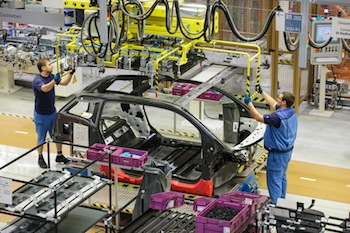
Meanwhile, the roofs are prepared for installation by pairs of robots. Each component is conveyed horizontally into the safety cage, before it is cleaned and the glue is applied; a robot then displays the work for a visual check by a human supervisor.
Doors and dashboards are both pre-assembled at Leipzig, a new development for the latter. The dashboards are another example of the plant’s JIT principles and organisational efficiency, as well as the eco-friendly nature of the i3; the decorative wooden elements are sorted by type in designated containers to proof the process against human error.
There is a separate assembly line for doors, with containers to keep the exterior shells close at hand. Since doors are decisive for effective vehicle assembly, they are first installed to check the fit with a particular module, removed for the insertion of interior components (to avoid scratches), then matched up with the same module later on.
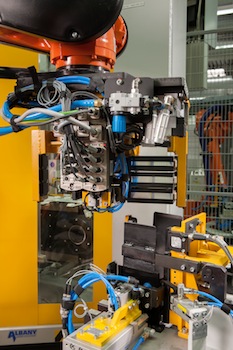
The cataphoretically coated aluminium Drive module of the i3 – which also contains a small amount of steel – combines low weight with strength and comprises 160 parts joined by over 19m of welding seams.
At Leipzig, workers bolt the battery to the aluminium structure, then check the fit before the assembly is transported to the next stage by driverless vehicle. Once the motor/transmission unit, the front axle subframe (pre-assembled at Dingolfing) and other structural parts have been installed, the Drive module moves on to final assembly.
Married for Life
The Drive module and the Life module are united – 'married' – in an automated process which is monitored by thermographic cameras. The Drive module passes through a series of four cages, meeting the Life module at the fourth.
In the first cage, a robot with a camera head takes images of where the bonding needs to occur – with approval required from a human worker – then cleaning agent is applied via a saturated felt pad. The module passes to the second cage, in a waiting phase, then in the third cage two robots apply the bonding agent. At this point, the Life module is waiting for its Drive module at the final stage, suspended overhead. The bonding agent contains a booster and has a curing time of less than six minutes; a countdown clock is displayed on a screen above.
In the fourth cage, the Drive module slides under the Life module, which drops down to meet it; the weight of the latter helps with the bonding process. Four screws are applied, the countdown clock stops (with time to spare) and the two are officially 'married'. The next Life module is already waiting, in suspense, for its partner.
Following this union, the multi-piece, outer plastic skin is bolted on, starting with the rear door. For the i3, there is no traditional paintshop process with priming, painting and drying of the entire body; instead, the bumpers, front, rear and side parts are treated individually by electromagnetic, dry overspray separation. The process is wastewater-free and results in reductions of 70% water and 50% energy consumption. The colour quality is checked in a finishing centre under alternating white and yellow strip lighting which mimics natural light.
In final assembly, the liquids and oils are added, and of course the wheels. After 20 hours in bodyshop and assembly (half the standard time), the i3s then link up with the conventional production taking place at Leipzig and, though 'born electric', they pass through the same quality controls as equals.































